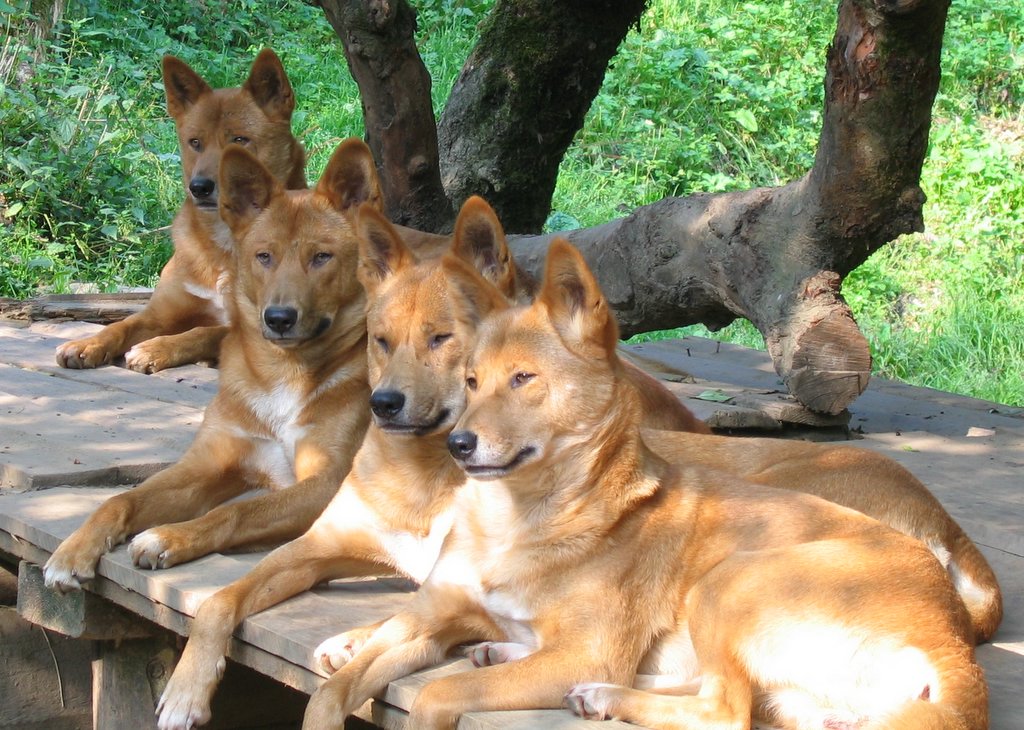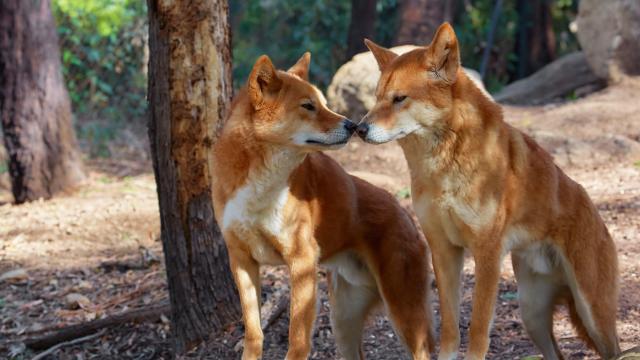An exhaustive genetic analysis of wild canines in Australia is challenging the commonly held view that “pure” dingoes are basically extinct. Accordingly, scientists say it’s time to stop referring to dingoes as “wild dogs.”
New research presents evidence that the dingo population in Australia is surprisingly stable and that hardly any interbreeding is happening between dingoes and feral dogs. The authors, led by conservation biologist Kylie Cairns from the University of New South Wales, say their findings highlight the need for more sensible conservation strategies when it comes to maintaining this native canid species.
As Cairns and her colleagues also point out, it’s time to get our vocabulary in order.
“A shift in terminology from wild dog to dingo would better reflect the identity of these wild canids and allow more nuanced debate about the balance between conservation and management of dingoes in Australia,” as they write in their new paper, published in Australian Mammalogy.

Indeed, words matter, and it’s a mistake to conflate the two species. Dingoes arrived in Australia at least 4,000 years ago, having descended from East Asian domesticated dogs. Divorced from Canis familiaris, the four-legged predators have been on a unique evolutionary journey ever since, and now represent a distinct species known as Canis dingo.
That dogs and dingoes are often conflated is wholly understandable, given their similar appearance. Dingoes have no particular colour, appearing sandy, black, white, tan, patchy, brindle (akin to tiger-stripes), and black and tan. This has led to the apparent misconception that dingoes have been rampantly interbreeding with feral dogs and that “pure” dingoes are now a thing of the past. The new research suggests otherwise.
For the study, the scientists analysed over 5,000 samples of DNA taken from wild canines across the entire continent, including hundreds of previously unpublished datasets. It now represents the largest genetic survey of its kind. Analysis of this data shows that dingo-dog hybridisation is not rife in Australia.
Of the DNA analysed, 99% came from either pure dingoes or dingo-dominant hybrids, in which a hybrid canine has more than 50% dingo ancestry. Nearly 65% represented pure dingos with no detectable dog ancestry, and 20% were dingo-dominant hybrids with at least two-thirds dingo ancestry. Of the 1% non-dingo group, half were dog-dominant hybrids and half were feral dogs.
“We don’t have a feral dog problem in Australia,” said Cairns in an article from the University of New South Wales. “They just aren’t established in the wild. There are rare times when a dog might go bush, but it isn’t contributing significantly to the dingo population.”
Of the dingo-dog hybridisation that is happening, most of it is occurring in southeast Australia, and — not surprisingly — in areas close to large cities.

Brad Nesbitt, an adjunct research fellow at the University of New England and a co-author of the study, said in the UNSW article that there’s “an urgent need to stop using the term ‘wild dog’ and go back to calling them dingoes.”
This finding is significant because some Australians, particularly farmers, consider them a pest animal and use the term “wild dogs” to exterminate any who wander onto their property. The term is also used by the Australian government in the context of lethal population control measures. These measures include aerial baiting, in which meat baits laced with sodium fluoroacetate — a pesticide — are dropped into forests from helicopters and planes.
These measures aren’t ideal, the authors argue, saying the non-targeted killing of these animals disrupts pack life, making individuals more willing to integrate with feral dogs. By “avoiding baiting in national parks,” particularly during the dingo breeding season, conservationists can better “protect the population from future hybridisation,” explained Cairns.
Dingoes, because they’re a native animal, are a culturally significant species in Australia and should be treated as such, the authors argue. As it stands however, dingoes are a “listed threatened species in Victoria, so they’re protected in national parks,” said Cairns, but they’re “not protected in [New South Wales] and many other states.”
Indeed, dingoes play an important ecological role that needs to be appreciated. As apex predators, they help to suppress large populations of herbivores, including kangaroos, who, through their overgrazing, damage soil and ruin land conservation efforts. They’re also helping with Australia’s feral cat crisis. The new findings, it is hoped, will lead to more sensible conservation efforts.
